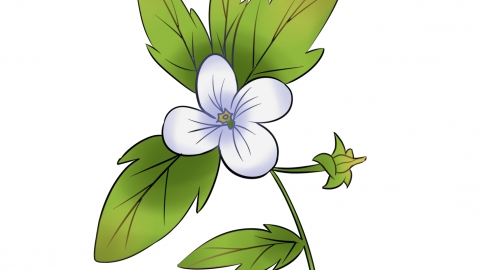What can be used as a substitute for geranium?
Generally, herbs that can commonly substitute for Geranium (Lao Guan Cao) include Siegesbeckia (Xi Xian Cao), Phryma (Tou Gu Cao), Mugwort (Ai Ye), Atractylodes (Cang Zhu), and Clematis (Wei Ling Xian). However, their use should be guided by a physician. Detailed explanations are as follows:

1. Siegesbeckia (Xi Xian Cao): Siegesbeckia has functions of dispelling wind-damp, and promoting blood circulation to remove meridian obstruction. It can relieve rheumatic pain and joint discomfort, similar to Geranium. It is frequently used for treating rheumatism and arthritis and is a commonly used substitute in traditional Chinese medicine.
2. Phryma (Tou Gu Cao): Phryma is warm in nature and can promote blood circulation to remove blood stasis, reduce swelling, and relieve pain. It is notably effective for injuries from falls or blows and for rheumatic pain. Its effects are similar to Geranium, making it suitable for both external and internal use to alleviate related symptoms.
3. Mugwort (Ai Ye): Mugwort warms the meridians to dispel cold and dampness and relieves itching. It can alleviate joint pain and skin itching caused by cold-damp. Although it is warm in nature, when combined with other herbs, it can achieve effects similar to those of Geranium.
4. Atractylodes (Cang Zhu): Atractylodes dries dampness to strengthen the spleen and dispels wind-cold. It is suitable for rheumatic pain and indigestion caused by excessive dampness. Its damp-removing effect is similar to that of Geranium, making it an important alternative herb for treating rheumatism.
5. Clematis (Wei Ling Xian): Clematis excels at dispelling wind-damp and promoting circulation of the meridians. It can relieve rheumatoid arthritis and muscle aches. Its effects of promoting blood circulation to remove blood stasis and reducing swelling to relieve pain are very similar to those of Geranium, making it a commonly used substitute in traditional Chinese medicine.
When choosing substitute herbs in daily life, it is important to select them according to individual constitution and condition under the guidance of a qualified physician to avoid adverse reactions caused by self-medication. When purchasing herbs, ensure they are obtained from reliable sources and meet quality standards.





